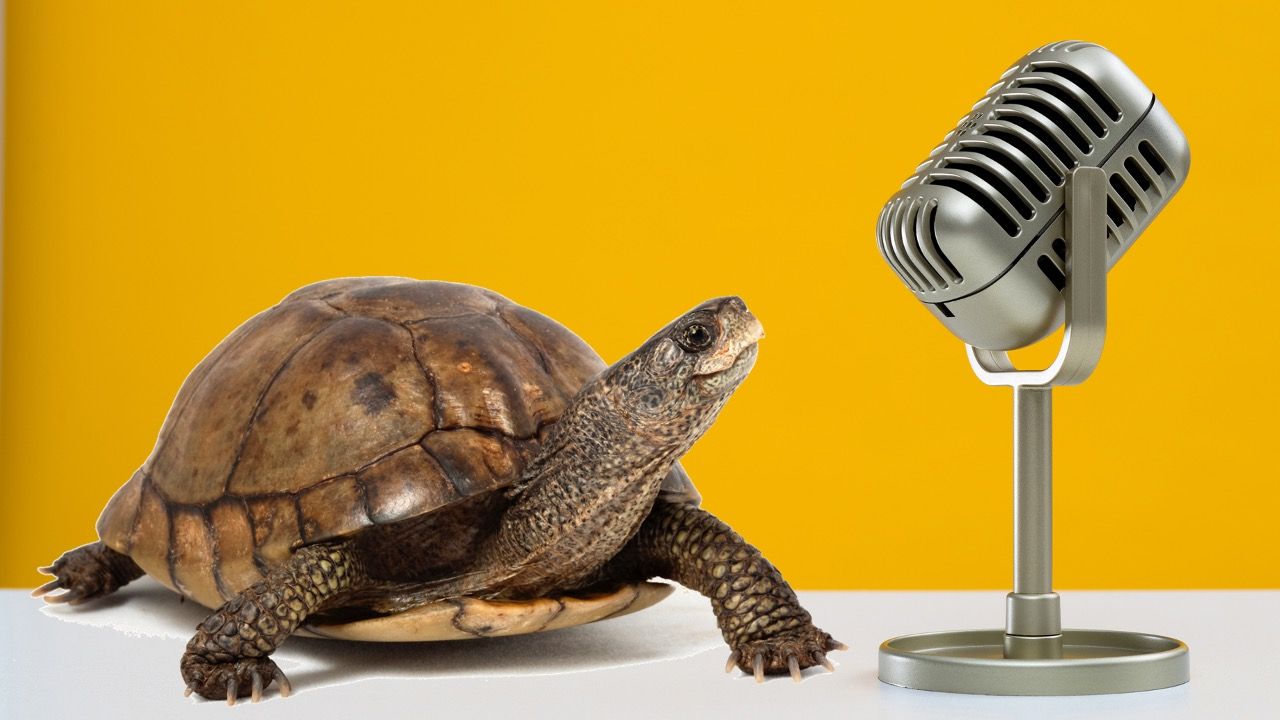
You may have heard the old fairy tale of the hare and the tortoise: the fast-running hare who is so confident of outrunning the tortoise that he takes a nap, and ends up getting beaten to the finishing line by the slow but steady, reliable tortoise.
When it comes to speaking, taking naps is something you might want to do before you speak, but hopefully nobody will be napping during your presentation.
We can however imagine two kinds of speaker.
The hare would be the speaker who is in a hurry to get through their talk, speaking quickly as if they have an urgent appointment with the nearest rest-room or simply as if worried they don’t have enough time to cram in everything they want to say.
The hare is like a typical teenager: while they have an existential need for a fast internet connection at all times, they don’t appear to need oxygen. Young people, like ‘hare’ presenters, speak as if it were a competition to get through as many words per minute as possible, leaving no pauses which other people might use to interrupt their flow, or breathe, or perhaps even digest their messages.
In short, the hare speaks as quickly as possible, betraying a lack of confidence in their ability to manage the time, and an apparent desire to finish their presentation and get off the stage as soon as they can.
The tortoise, on the other hand, will take their time, speaking slowly, carefully, deliberately, and giving each word the power it deserves. Imagine each word being the thudding footfall of a meticulously planned tortoise step, rather than the light padding of the speedy hare. The tortoise’s words hit harder, conveying not only the syllables of each word but also the emotion and meaning that go with them. The audience has more time to think about the tortoise’s messages, to reflect on what they mean to them, and to digest them.
Of course, if the tortoise is too slow, it will never win the race, and if a ‘tortoise’ speaker is just too slow all the time, the audience will lose attention. But most speakers could gain immensely from being less like the hare, and more like the tortoise. Give the audience the chance to digest what you are saying, and they are more likely to do what you want them to do.
What is more, they are more likely to perceive you as a confident leader. Confident enough that you are not worried about being interrupted when leaving a pause for the audience to breathe, reflect and anticipate. Confident enough that you won’t run out of time, because you are well-prepared. And confident enough to take your time on stage, to savor the moment, and to be comfortable in everyone’s gaze.
That’s the kind of speaker people will respect, listen to, and follow.
So don’t be the hare: be more like the tortoise, and you’ll be sure to win over your audience.